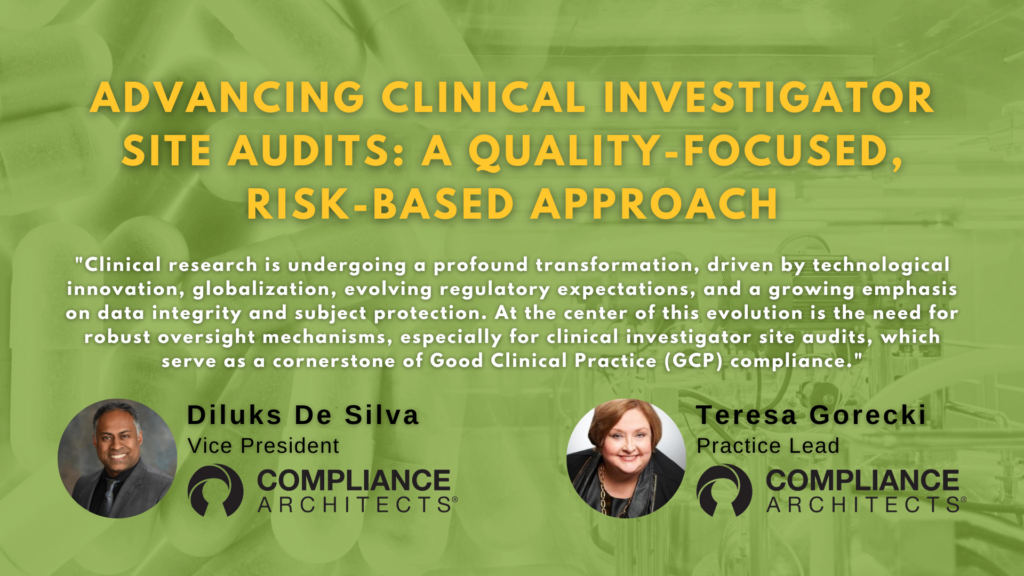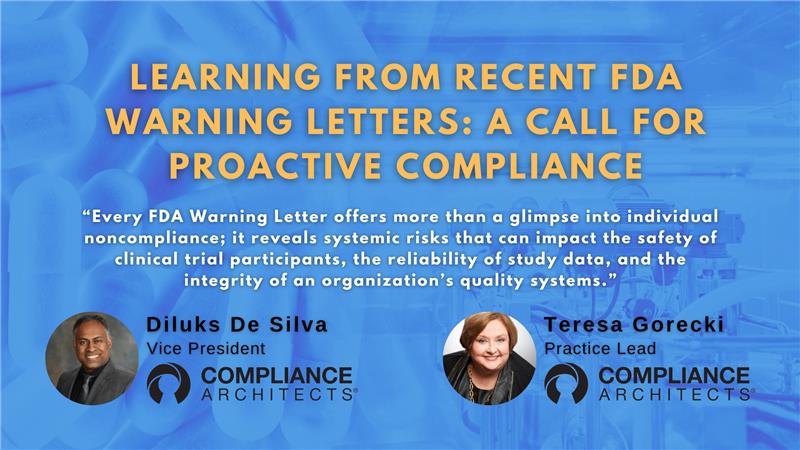FDA inspection readiness is always a hot topic within the life sciences industry. Much attention is paid to ensuring that SOPs are in place, employees are trained, and all documentation is complete. But firms also need to be well-prepared for how to handle it when the FDA does have observations during an inspection. Preparation requires clear procedures for responding to inspectional observations and soft skills that help build a good relationship with the agency.
The FDA expects all drug and medical device firms to maintain their operations in a continual state of GMP compliance across all operations. An inspection is essentially a test of that status at a given facility. The agency uses a set of risk-based inspection criteria to determine when to inspect a particular facility, as noted by Denise DiGlulio, a facility reviewer in CDER, at an FDA small business and industry assistance conference. The criteria look at risks associated with:
- The individual facility, including compliance history;
- The products made there and the overall risk they could pose to human health and
- Risks associated with the manufacturing process itself.

Lack of preparation can mean more—or more serious—inspectional observations. Good FDA inspection readiness requires a deep understanding of how a facility’s quality management system works and diligent review to avoid gaps in crucial areas, such as documentation and training, that could lead to problems during an inspection.
Much of that preparation in the pharma and medical device worlds focuses on the regulatory requirements and documentation. But what about when agency investigators do have observations during an inspection? It is equally as essential to have a solid plan for ensuring that issues raised during an inspection are handled in a way that passes FDA muster.
Chief among these is to respond promptly to all observations. FDA encourages a response to Form 483 observations within 15 days and will consider timely responses when determining whether any administrative or legal action will be pursued. To be effective, this response must be thorough and timely.
Appropriate staff from quality assurance and other pertinent departments must complete an in-depth root-cause analysis to identify the problem’s cause. The analysis results, including a description of the analysis tools and methodologies used, must be provided to the FDA, along with a well-thought-out CAPA plan.
All these processes should be described in SOPs that are maintained along with all other SOPs related to the manufacturing operation.
Table of Contents
Bring in the soft skills to gain the FDA’s trust.
The promptness of the response is not the only factor to consider. Striking the right tone in all inspection-related communication with the agency can go a long way toward easing the potential burden of handling a violation or inspectional observation. The formal response should be prompt, thorough, and worded carefully to ensure that all company actions are transparent to the agency and the reasons behind those actions.
If the CAPA plan has not been completed to support the 15-day response, the company should keep the FDA updated on progress toward that goal. For more serious violations—those designated Official Action Indicated (OAI)—those updates might be more frequent, and the CAPA plan approached with greater urgency. On the other hand, those for issues labeled Voluntary Action Indicated (VAI) may not need to be handled as aggressively. The tone should focus on cooperation in all these communications to solve the problem.
This applies to interactions with the FDA during the inspection, as well. Part of inspection preparation should be training personnel who will interact with an agency investigator on how to do that. The training should include what to say and what not to say, as well as emphasizing the importance of cooperation.
Another important factor is transparency. Simple steps like quickly providing FDA investigators access to all requested documentation during an inspection can help establish credibility with the agency, which will also carry through to future inspections.
Additionally, designated staff with the authority to answer FDA questions should be readily available and well-schooled to answer all agency questions politely and thoroughly.
Focus on documentation, mock inspections for FDA inspection readiness
Of course, many such questions can be avoided if companies focus their inspectional preparedness efforts on the central issue: complete, current, compliant documentation. In the FDA’s world, nothing undocumented is considered to have happened, so having SOPs and quality records up-to-date and readily available is crucial.
Additionally, all documentation should be written so that FDA investigators can understand a company’s actions. Compliance documents should clearly show how the activities and practices of a facility’s daily operations comply with applicable regulatory requirements. Equally important are the records demonstrating that personnel followed the SOPs and other compliance-related documents.
Following seven simple steps can help to ensure that all documents subject to FDA review during an inspection are up to par:
- Determine the purpose of each document.
- Determine and write for the target audience.
- Ensure document structure and content are easily understandable to read.
- Establish and explain the situational and technical context.
- Investigate/analyze activities described in the document.
- Develop conclusions about the cause and contributing factors to the activities described.
- Conduct independent peer and supervisory review of the document.
Another crucial step in FDA inspection readiness is training for all staff. FDA regulations governing drug and medical device manufacturing facilities require all personnel to be trained for compliance. This should include initial FDA inspection readiness training for new employees or follow-up education when a procedure changes to ensure that all employees continue to perform in line with GMP requirements.
This training must include training in procedures before, during, and after an FDA inspection. Some staff will be designated to perform specific roles, such as collecting documents, answering questions, greeting and escorting the investigator, and other tasks; those staff members must be trained to perform those jobs. Additionally, training for some staff may include instructions on referring any investigator questions to a designated QA staffer.
All employees should also receive training in the procedures to be followed during a Form 483 observation involving their departments or jobs.
Once these steps have been completed, it’s a good idea for companies to test their preparation through periodic mock inspections. These can be conducted by internal QA personnel or by a third party. By going through these inspection dress rehearsals, life sciences companies have an opportunity to identify any gaps or weak points in their compliance procedures and documentation, leaving time to correct those problems before the FDA comes calling.
Furthermore, allowing employees to practice their rules during a mock inspection can highlight areas where more training or education may be needed and build familiarity so things go smoothly during an actual inspection.
Compliance Architects is here to help.
Pharma and medical device companies don’t have to undergo this process alone. Compliance Architects’ skilled staff offer decades of hands-on experience helping myriad companies complete FDA inspections. Compliance Architects can provide companies with individualized inspection preparedness services tailored to each firm’s needs.
These years of real-life experience allow Compliance Architects’ experts to help companies identify compliance gaps, polish their SOPs, quality records, and other compliance documents, and streamline on-site processes.
And Compliance Architects can help with training, as well. In addition to analyzing each company’s unique needs, expert consultants can develop materials to help train staff on how to travel through an FDA inspection without falling into any stumbling blocks.
Life sciences companies must take a proactive approach to inspection preparation. This must include a careful review of crucial compliance documents and procedures and a plan for handling Form 483 observations if they occur. That plan needs to focus on:
- A thorough response within 15 days to any Form 483 Observations;
- Maintaining a cooperative tone with the FDA both during the inspection and in all responses and follow-ups to any observations and
- We are maintaining transparency and responsiveness to build trust with the agency.
And support from skilled consultants with decades of relevant experience can only help with FDA inspection readiness. Compliance Architects stands ready to help ensure that future inspections go smoothly.
Go here to learn more about Compliance Architects’ services.





